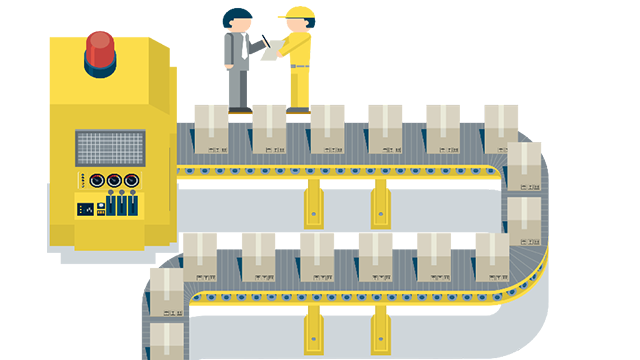Revolutionize your paper manufacturing with AI-driven optimization. Enhance efficiency, cut costs, and achieve autonomous operations like industry leaders Arjowiggins and Oji Paper. Embrace the future of smarter production!
Learn more

While there are plenty of examples of “best practices” for your IIoT implementation, these five less-obvious approaches may be the key to helping your implementation go smoothly.
It’s tempting to gravitate to your least-productive facilities for new digital transformation initiatives. We can be misled by believing the lowest-hanging fruit will be found at struggling facilities.
However, low performance isn’t always an indicator of the easiest wins. There may be other factors—aside from technology—that are hindering lower-performing facilities.
Look for other attributes in your employees or plant structure that may lend themselves to a successful roll-out. Your most successful plants are likely successful for a reason. Work on leveraging what these plants are doing right rather than overhauling a struggling plant.
“We told ourselves that Braincube had been very efficient at fixing a serious problem,” said an executive at Smurfit Kappa. “We asked ourselves what would happen if we used it to give us a bigger edge in factories that were already highly efficient, to optimize a process that is operating just a little below capacity. As it turned out, we found the tool had other advantages.”
Think outside the box and consider other reasons why one plant may be more successful than others. Perhaps one of your plant managers already approaches problems using data-driven decisions. This kind of leadership is more likely to take to new technologies, strategies, or workflows than a plant with less ambitious leadership.
You may consider facilities with newer technology in place that will make it easier to utilize the benefits of an IIoT platform. It’s far easier to continue building on these technological advancements than build out an older facility from the ground up.
Adding advanced technology to a broken culture won’t result in company-wide transformation. In order to be successful, start with a solid foundation before implementing IIoT on top.
Allocate resources (both time and money) to the people who will use the technology, not just the technology itself. The technology can’t do anything on its own. Even the most advanced AI and Machine Learning programs rely on knowledgeable operators to make sense of trends, anomalies, and variations that IIoT platforms uncover. The people using this technology—operators, engineers, plant managers—are the ones who discover the big wins that move your company forward.
“With Braincube, [operators] don’t feel like they’re being second-guessed,” said an executive at Smurfit Kappa. “We give them a tool that allows them to investigate issues they had raised intuitively…With Braincube, there’s a really high adherence rate because it doesn’t attempt to supplant the human element.”

Make sure your teams are given continuous learning opportunities to grow their skills. These opportunities could be specific to the given tools available at your company or they could include wider topics such as management and supply chain. Offering these opportunities to multiple teams simultaneously can lead to better cross-team collaboration.
In addition to training your employees on a new technology or system, continuous learning opportunities can help with retention. This is a crucial benefit in the world of manufacturing, which will continue struggling with high attrition as experienced employees retire and it’s harder to recruit new talent.
When most businesses first start an IIoT implementation, they focus on building out a digital strategy that will allow them to easily scale their findings to other plants or facilities. This is great for companies with facilities that operate similarly or produce the same products, but it isn’t the case for every company.
Instead, try reframing your Industry 4.0 initiatives to focus on building out your internal culture. Establish a framework that promotes sharing learnings, new ways of thinking, and the steps that lead to big discoveries.
“A strong network surrounding the use of a technology allows companies to more completely leverage the creativity and ingenuity of their individuals,” said Briana Wolf, Braincube Consultant. “One user came up with a clever way to systematize their deviation response plans in Braincube. The corporate team then shared that example with other business units, and now plants throughout the organization use a similar strategy to quickly and appropriately respond to issues.”
This approach enables organizations to leverage the unique skill sets and implicit knowledge of employees at different facilities. The focus isn’t on simply replicating what other employees are doing. Arming employees with new critical thinking skills empower them to solve the problems most applicable to their world.
“Braincube made it possible for us to change our paradigm and to find a ‘smart’ way to use all our available data,” said Jacques Pierucci, Graphic Branch Senior Process Expert at Arjowiggins.
When implementing an IIoT platform, it is tempting to solve short-term pain points. An IIoT platform allows you to connect your data into a central environment, but does that feature align with your goals for usage? Consider what you want your teams to be able to “do” with data, then ensure that your solution accommodates that.
Keep long-term goals in mind when discussing how to align your OT/IT systems into your strategy. Maybe you need more sensors to gain greater visibility into your process via Edge hardware. Do you need advanced applications so that you can deep dive into continuous improvement projects? What about the ability to build models to generate predictive and prescriptive operations?
By thinking through your final use cases, you can build into the platform that works for you. You’ll want to understand a product’s full suite of connectors, software, hardware, and consulting services. This ensures that you know what you’re getting—both from a cost and a delivery perspective.
As you get closer to implementation, build a roll-out plan that encompasses your demonstrators and key metrics. Think about what you want your teams to say a year from now if you were to ask them, “What is the greatest value you’ve found in adopting an IIoT Platform?” Holding those ideal answers in your mind will give you a solid plan to get teams up and running.

As you consider your holistic goals, think about what role you want an IIoT vendor to play in your IIoT implementation plan.
Vendors can fill multiple roles, so it’s important to know how you want to work with them. Do you want a long-term relationship with a vendor? Or are they solely a software provider with little to no consulting? Some companies want a third-party to come in, problem-solve, and troubleshoot their production processes. Others prefer to train a technical leader at each location who then teaches the rest of the plant’s employees.
As an IIoT provider, we’ve seen IIoT projects fail due to a lack of ownership in the rollout plan. It can be tempting to go with a vendor who promises white-glove treatment for all of your needs. However, that may not be the best fit for your company culture or long-term digital transformation strategy.
Consider if your end goal is to be self-sufficient or if it makes more sense to rely on a vendor strategy for implementation. We’ve heard from many companies that their three biggest assets are their people, data, and end product. If this is true for your organization, your long-term goals should reflect this. Think about goals that focus on driving progress through people empowerment, good (and secure) use of data, and improving product quality.
When implementing your IIoT strategy, turn to facilities, teams, and managers that have a track record for success. Bringing your employees into your IIoT platform implementation process in unique ways—and designing goals that incorporate long-term strategies across multiple teams—can help you transition from a successful implementation to a successful Industry 4.0